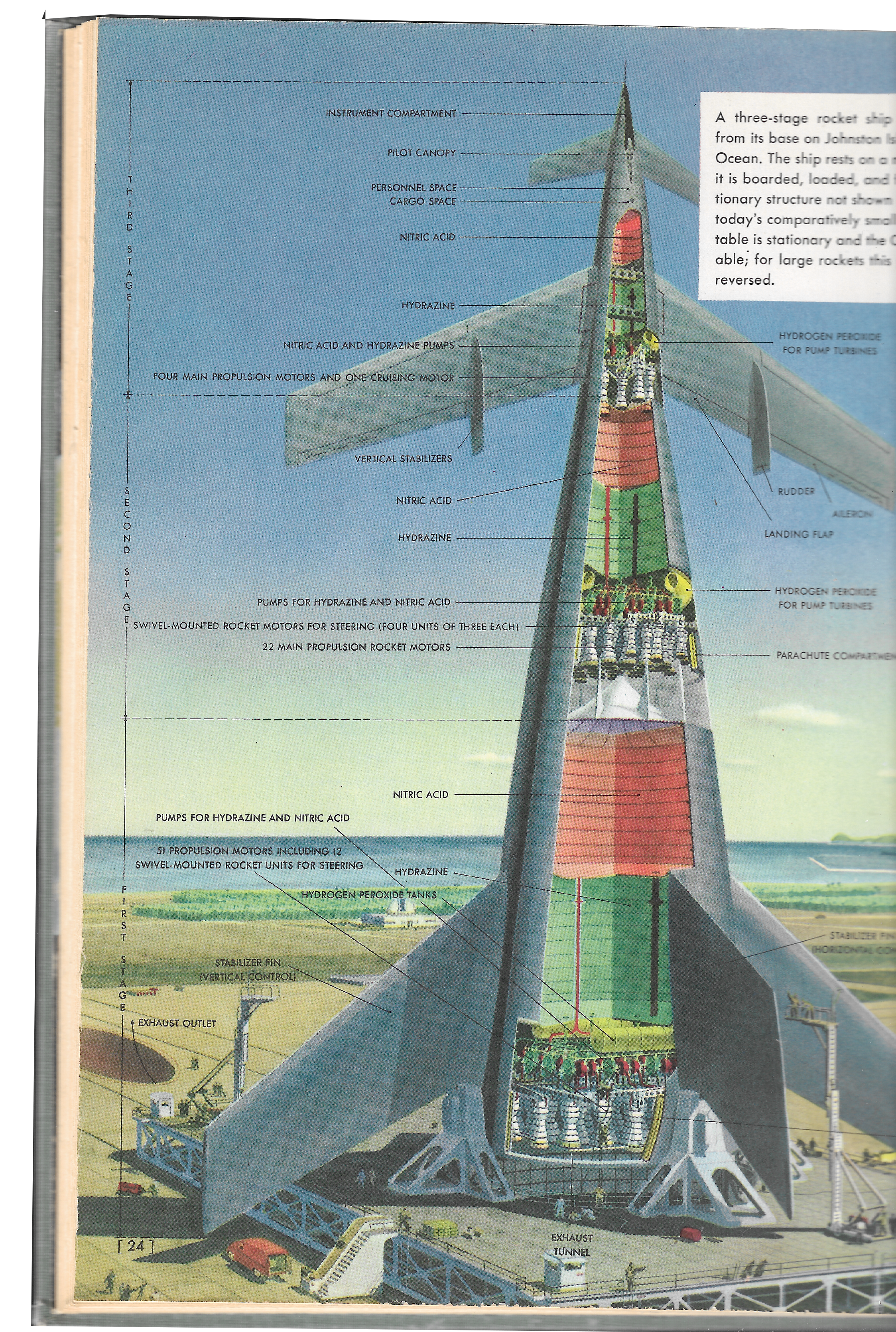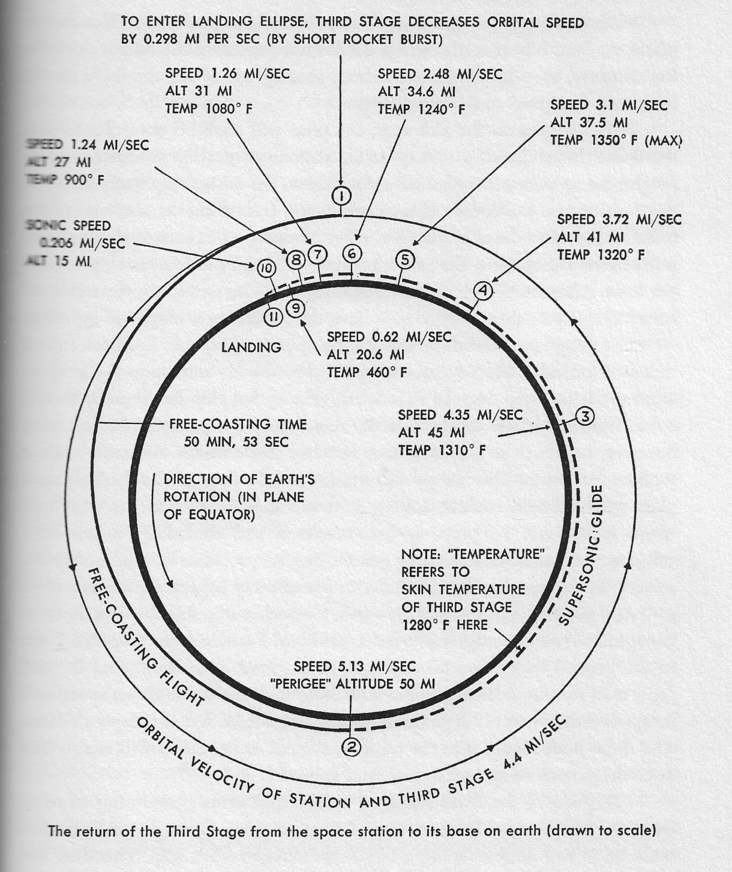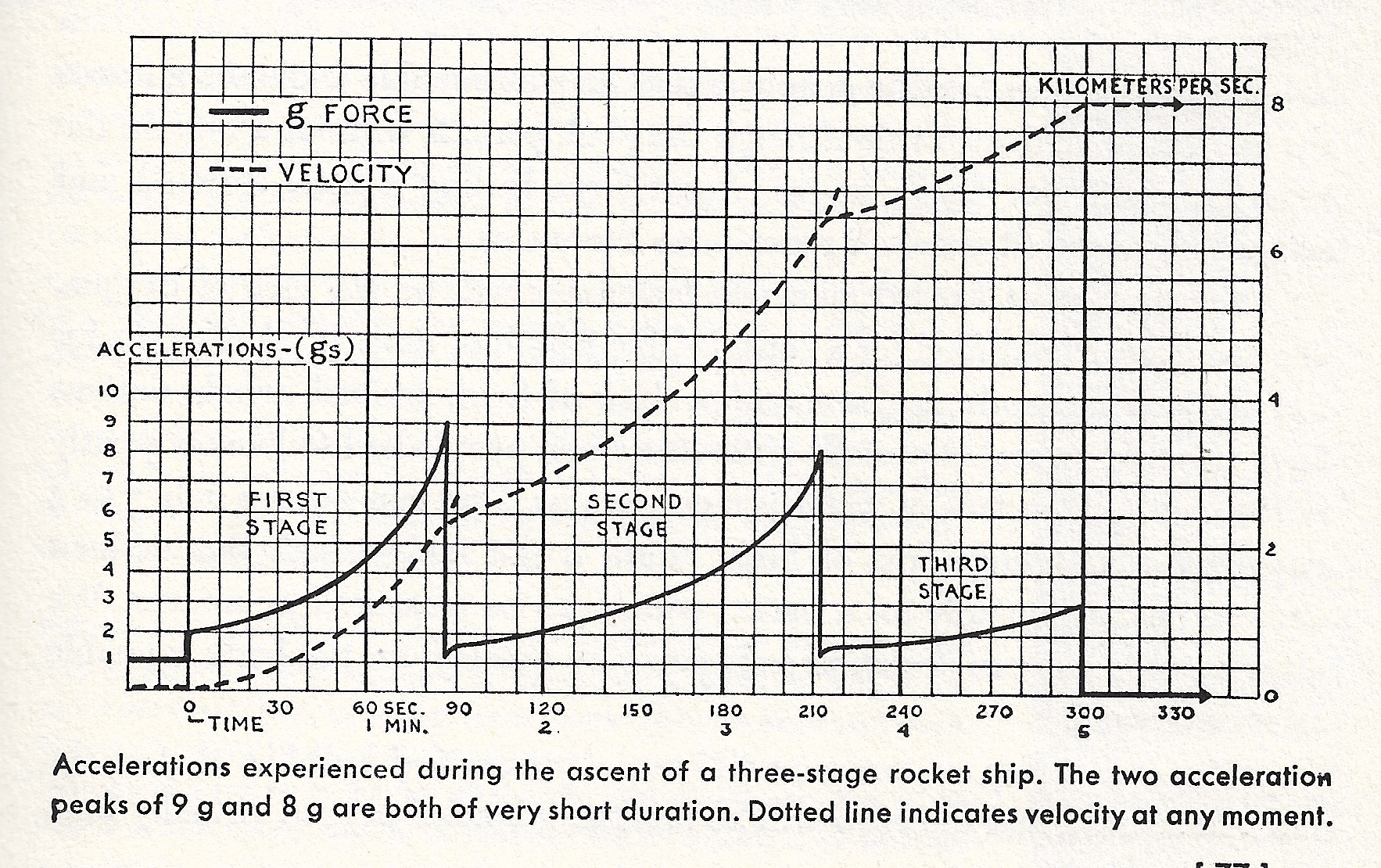Across The Space Frontier - Launch Vehicle
Across the Space Frontier, Joseph Kaplan, Wernher von Braun, Heinz Haber, Willey Ley, Oscar Schatchter, Fred Whipple, edited by Cornelius Ryan, Viking Press, 1952.
In a sense, this book is part of a prose exposition, and elaboration of von Braun’s The Mars Project, the technical appendix of Project Mars,
I have a copy from the second printing, June 1953
Wernher von Braun himself wrote the launch vehicle section. This section features a completely re-usable, 3-stage rocket. The final stage (and re-entry vehicle) has swept wings for gliding in to a landing.

Above: an enormously influential drawing of von Braun’s launch vehicle concept. Books like Lester del Rey’s Step to the Stars, and Mission to the Moon, movies like George Pal’s Conquest of Space, and TV shows like the Man in Space episode of The Wonderful World of Disney and the obscure and underrated Men into Space series all borrow freely from Across the Space Frontier.
Looking at getting to and from earth orbit from the lofty pinnacle of 2023, it’s clear that von Braun accurately knew how to get something to earth orbit. The problem he had was getting humans back to the ground.
Why did humans have to go to orbit? Absolute lack of automation. Without humans doing things, cameras couldn’t focus, telescopes couldn’t point in the right direction, and atomic bombs couldn’t be guided to their targets.
In 1952, electronics were primitive. Remember that the transistor wasn’t demonstrated until 1947. There was nothing like a digital computer, only electromechanical analog computers like the US Navy Mark 1 Fire Control Computer, or a Bendix Central Air Data Computer. Humans, specifically males, had to work the cameras, point the telescopes and potentially guide atomic bombs to their targets.
Scrubbing off orbital velocity via aerodynamic drag is one way to get humans back from orbit. The storied Space Shuttle returned from orbit using that method. The method that the US and USSR went with in real life during the 1960s “Space Race”, ablative heat shields, were apparently invented in 1951, and kept secret until 1958.

Supersonic gliding re-entry. Third stage was to have a stainless steel skin, to tolerate high temperatures generated during reentry.

Here’s a platform line drawing of the launch vehicle from Dream Machines, to give a better idea of what the launch vehicle would look like.
Had people developed such a beast, they probably would have ended up with a less pointy third stage, something like the Dyna-Soar. The sleek, pointy, von Braun third stage absolutely would have melted during re-entry. They just didn’t know enough about hyper-sonic aerodynamics in 1950. Experimentation lead Boeing to a blunt, chunky, Dyna-Soar. Dyna-Soar had a steel skin just like von Braun’s third stage, unlike the Space Shuttle’s insulating tiles.
Having a winged re-entry vehicle on the top of your rocket necessitates the first stage’s large fins. Take it from me, an old model rocketeer, having fins like the third stage’s wings in front guarantees exciting aerodynamic instability. Even though the first stage has some “swivel mounted” engines, the large wings of the third stage will cause problems. Von Braun was aware of how hard it is to balance a rocket on the thrust of its engines from experience designing the V-2 IRBM. He put large, stabilizing fins on the first stage of his launch vehicle to compensate for the winged third stage.
Von Braun and friends examined everything in amazing detail.

Von Braun put a lot of thought into the design of this launch vehicle, but it’s also clear that this is a design study. The launch vehicle evolved during the course of publishing the three-book series (Across the Space Frontier, Conquest of the Moon, The Exploration of Mars). By the third book, von Braun had swapped out the swept wings for delta wings. In the Disney episode Man in Space, von Braun had a 4-stage vehicle, although that seems to mostly have been necessary to evade copyright restrictions.
